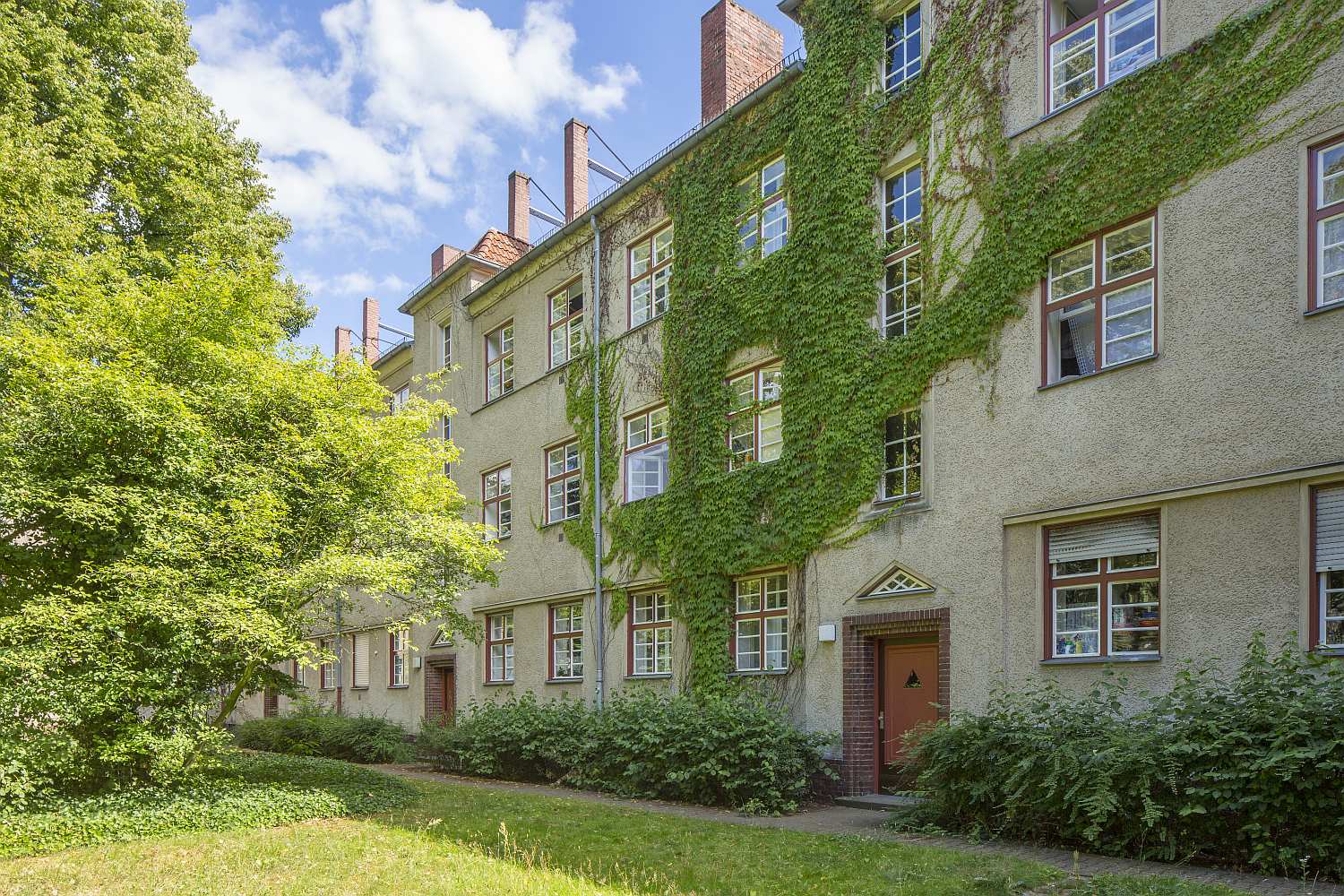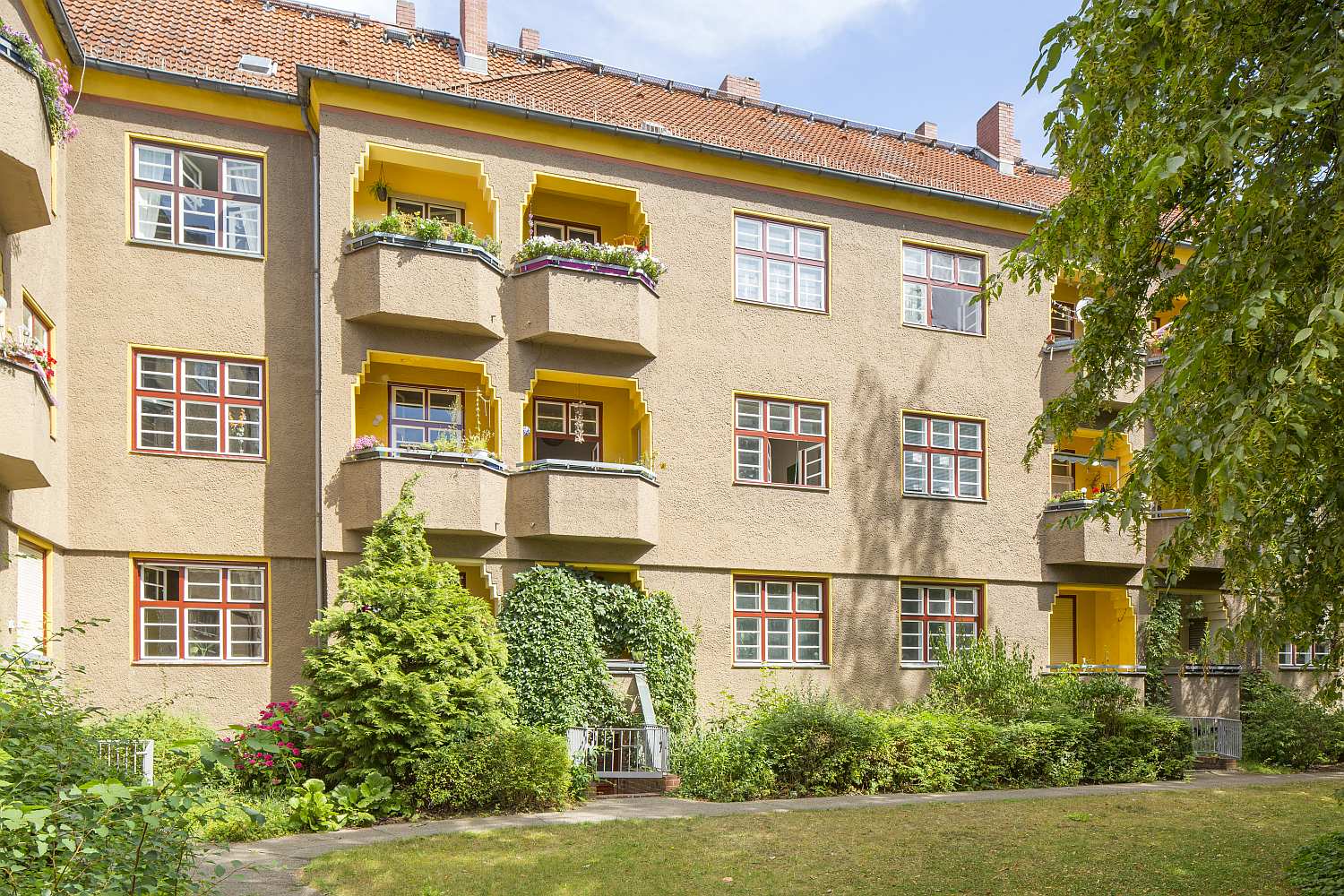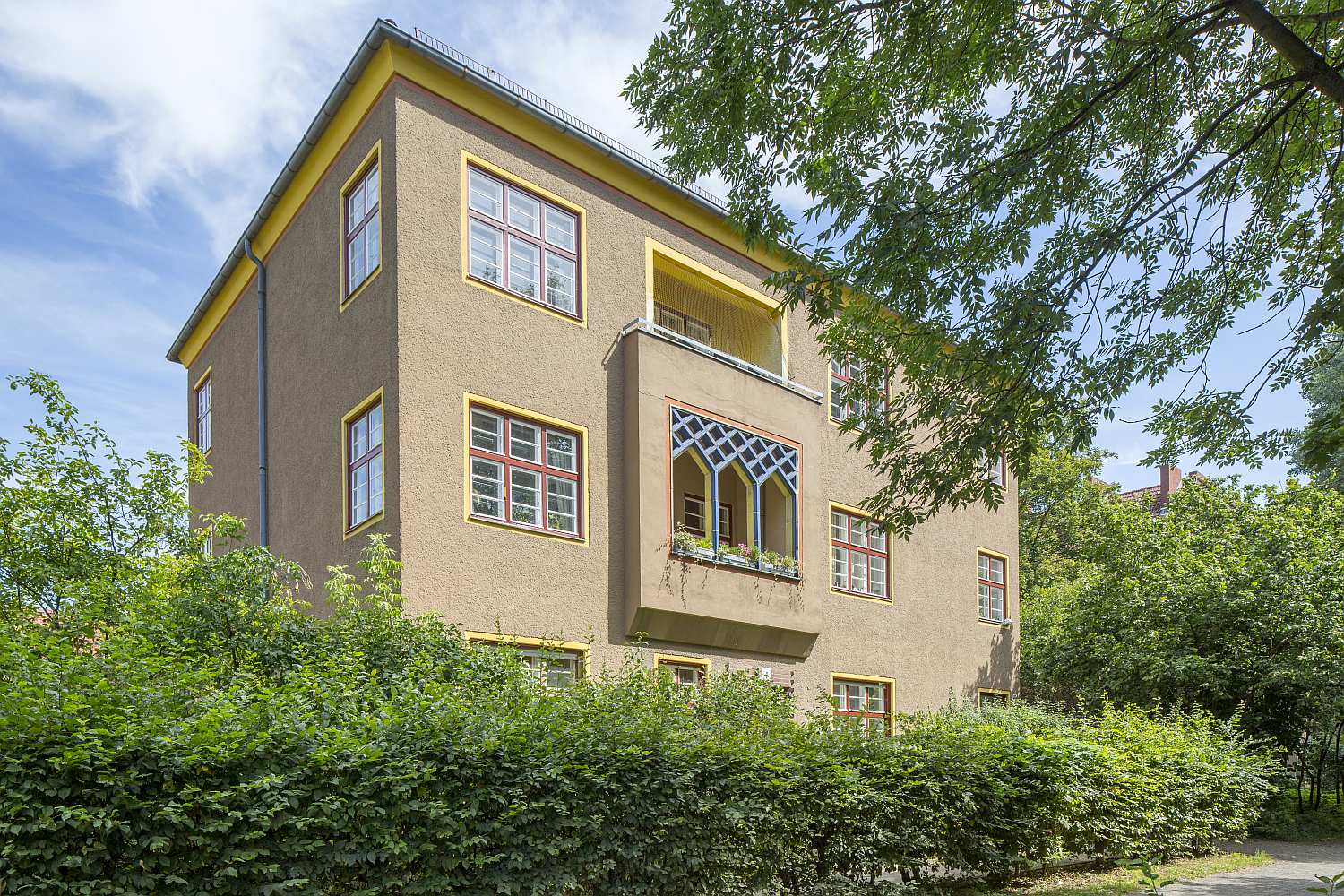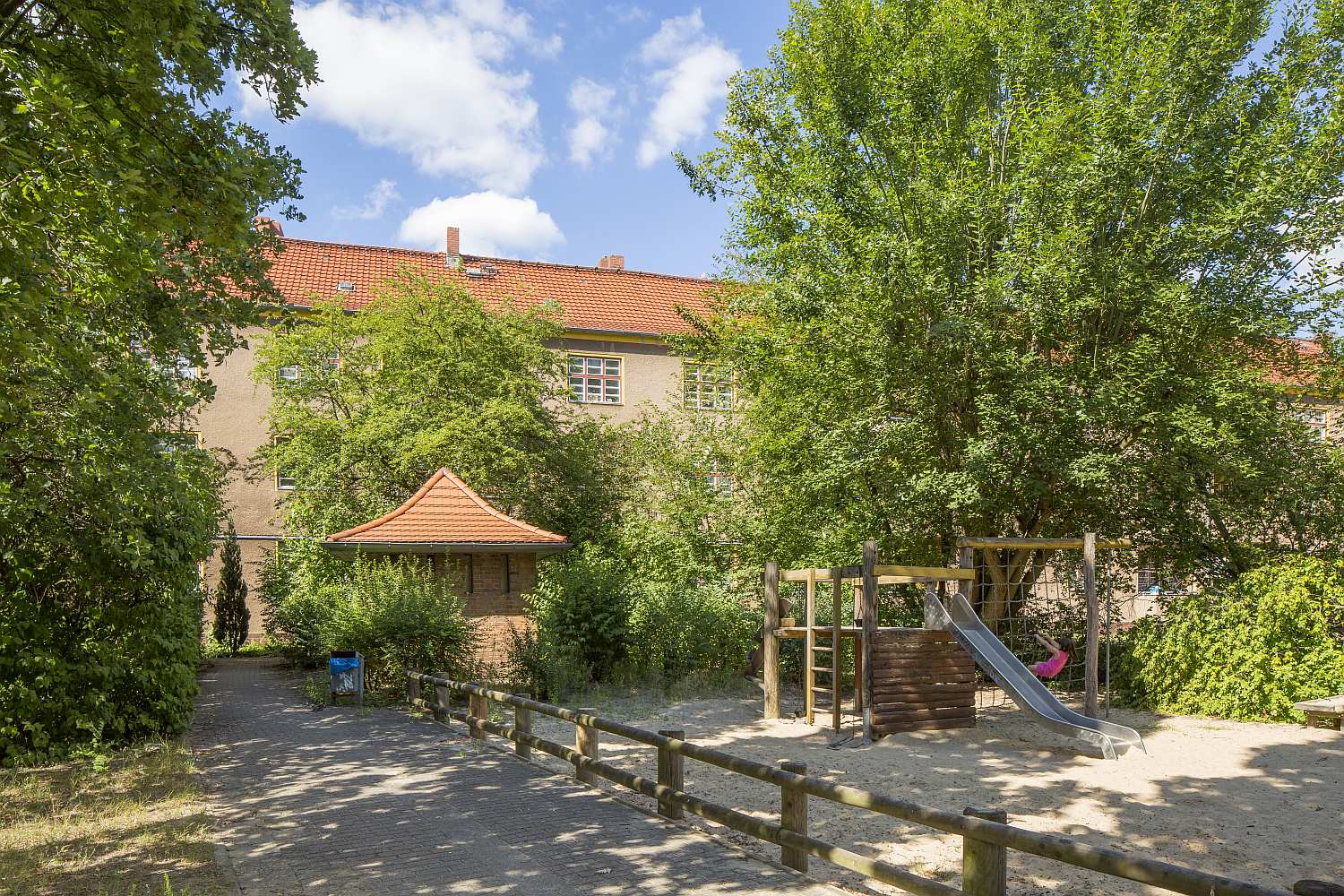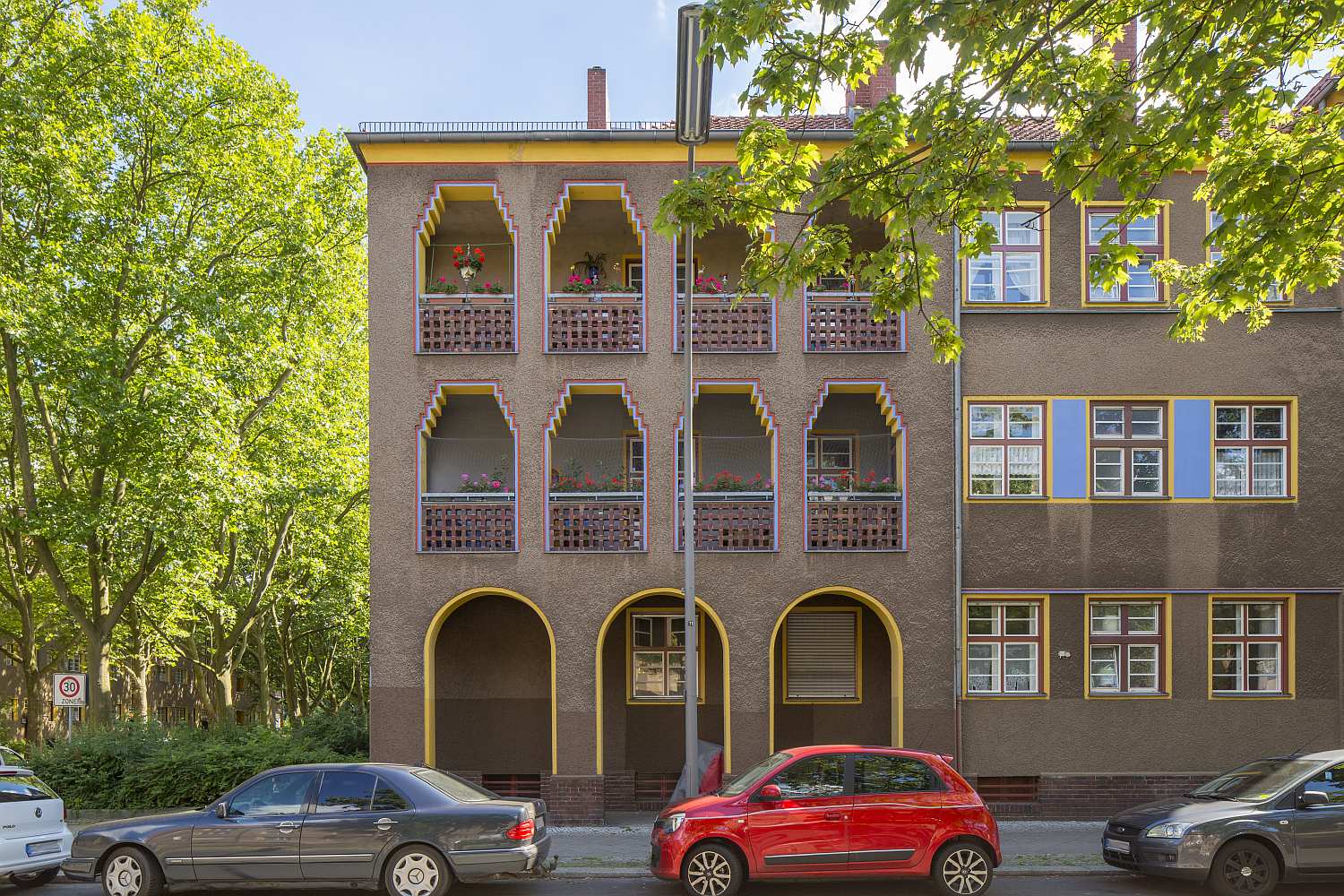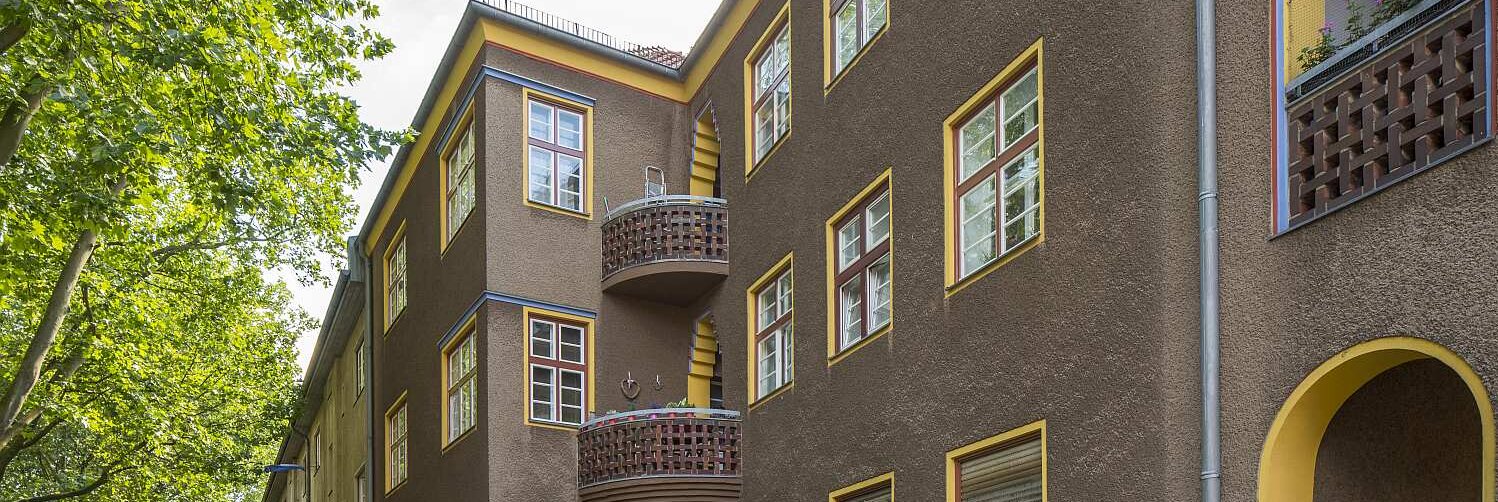
Expressionism in north Berlin
The Weisse Stadt in Reinickendorf is well known to many because it is one of six UNESCO Berlin Modernism Housing Estates and exemplifies the historic "Neue Sachlichkeit" architectural style. The Paddenpuhl estate, which is also a listed monument, is like an insider’s tip that is still waiting to be discovered.
Bold and bright
The interesting thing about the estate is that, unlike the White City, it is an example of Expressionism. It was designed by the architect Fritz Beyer, according to whose ideas the first buildings were constructed. In the 1930s, architects Josef Scherer and Erich Dieckmann expanded the estate. It comprises a total of 500 apartments, which are spread over three floors along Klemkestrasse.
Characteristic of the exterior of the estate are the chocolate-coloured facades, the multicoloured windows, the equally colourful corners of the buildings and the edging of the loggias. In addition, the serrated arches and colourful columns give the buildings a strong contrast to the existing bay windows. Its appearance is rounded off by the outdoor areas designed by Erwin Barth.
Deutsche Wohnen received an award in the Reinickendorfer Bauherrenpreis in the category “Listed Complete Estates – Residential” for the renovation of the estate in line with listed building regulations.
What about the name? The Paddenpuhl itself is a small body of water, which is also known as 'Breitkopfbecken', and serves as a reservoir for rainwater. Actually, such small waters are called Pfuhl in German, but the “f” was probably dropped over the years, resulting in 'Puhl'.
